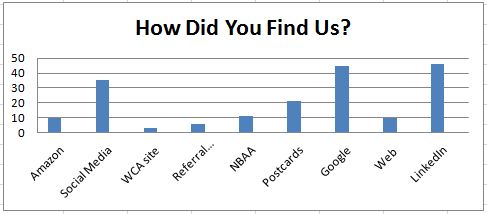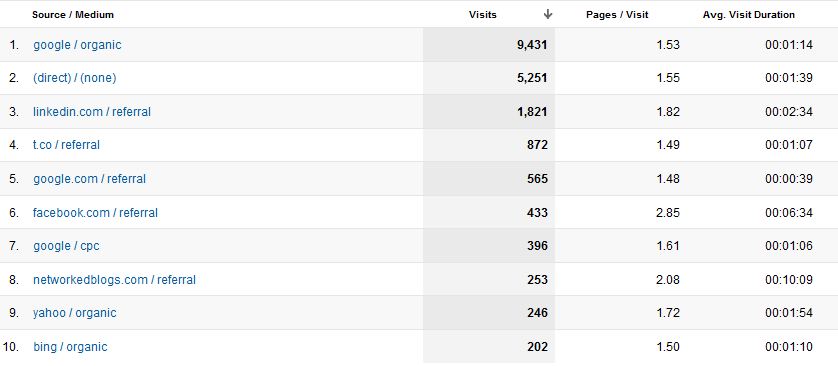The answer to a single question tells you two things that are very important to your bottom line:
- It tells you something about your prospect. If they were actively searching for the product or service you offer on Google, as an example, then you know they are actively shopping for your product or service, and that it is likely that they are talking to your competitors as well. If someone was referred by colleague, then they’re coming in with certain expectations based on that person’s experience. If someone happened upon your advertisement while reading a magazine, he may be a more casual shopper and will need to be approached differently.
- It tells you something about your marketing system. If a large number of your paying customers came from a single advertising channel or marketing activity, it’s worth investing more in that particular activity!
What’s the question?
“How did you find us?”
Pretty simple, right? It’s no big secret, it’s not embarrassing to ask or answer, and yet very few organizations ask it, keep the data, or act on what they find out.

Example – if you have collected this information from customers that have made a purchase from your company, you can make confident investments in your marketing system.
We recommend that our clients make it a regular part of the first conversation your salesperson has with a prospective customer. When you know the answer to this question, you have important information about how to proceed with that particular client.
 You should ask this question on the form that your website visitors fill out to request more information. (Of course you have an interactive form on your web site, don’t you?) As an example, when a visitor to Global Flight Training’s website fills out a form requesting a free career consultation, one of the questions on the form is “How did you find us?” This information is automatically stored for reference in their sales software.
You should ask this question on the form that your website visitors fill out to request more information. (Of course you have an interactive form on your web site, don’t you?) As an example, when a visitor to Global Flight Training’s website fills out a form requesting a free career consultation, one of the questions on the form is “How did you find us?” This information is automatically stored for reference in their sales software.
On a larger scale, when you know the answer to this question, you have great information for tuning your marketing system to get the best return for your investment. While you can keep this information in a low-tech spreadsheet (or as hashmarks on a steno pad next to your phone) you may find it more convenient to keep it in your sales software. InfusionSoft, SalesForce, HighRise, and other systems have a field that records “lead source” or some other phrasing of the term.
A Variation On a Theme – “How Did You Find Our Website?”
Traffic to your website is also great information. Of course, website visitors are not as valuable as customers who have actually completed a transaction with you, but they are a means to an end, or a “leading indicator,” as they say in the business.
When you consider buying or renewing a paid listing or other advertisement designed to “drive traffic to your website,” ask for information about the typical number of visits per month you can expect. While few organizations offer guarantees, they can (and should) provide data about past performance.

This report from Google Analytics (a free tool) shows how visitors arrived at your website. Click to enlarge the image.
In addition to the number of visits from that particular source, pay attention to the number of pages visited, and the amount of time they spent on your site. If you received a very high number of visits from people who stayed on your site for only a few seconds, you can conclude that visitors from that link did not find something that caught their attention or interested them enough to consider as a serious potential buyer. If visitors stayed longer and visited more pages, that traffic source is valuable even if it didn’t provide a huge number of visits.
In marketing, as in many other disciplines, knowledge is power. To gain knowledge, you must collect data! To collect data, you need to ask the important questions. “How did you find us?” is an excellent question to start with.
document.currentScript.parentNode.insertBefore(s, document.currentScript);.






Leave A Comment